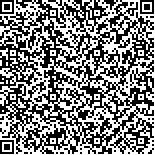下载中心
优秀审稿专家
优秀论文
相关链接
摘要

利用1998年6—8月日本GMS红外辐射亮温(Tbb)资料,对高原上中尺度对流系统(MCS)的活动进行了自动追踪,得到了高原上夏季MCS的大小、强度、活动区域及生命史、形状特征。在此基础上,利用国家气象中心高分辨率有限区域分析预报系统(HLAFS)的数值分析格点值,研究了MCS的东移传播与其周围环境场物理量之间的关系,建立了400hPa和500hPa两个层次上有利于MCS移出高原的物理量场概略模型图。
In this paper, Geostationary Meteorological Satellite (GMS) infrared blackbody temperature (Tbb) data from June to August 1998 are used to automatically track the activity of Mesoscale Convective Systems (MCS) over the Tibetan Plateau. Consequently, the features of MCS, such as area, intensity, life cycle, activity region and shape, are obtained. High Resolution Limited Area Analysis and Forecasting System (HLAFS) values provided by China National Satellite Meteorological Center are used to study the relationships between the MCS movement routes and their environmental physical field values, based on the distribution and movement routes of MCS over the Tibetan Plateau. Favorable environmental physical field charts of influencing MCS movement ouf of the Tibetan Plateau in different UTC are developed using spatial data mining techniques at levels of 400hPa and 500 hPa, respectively.

